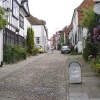 | 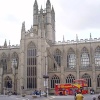 | 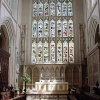 | 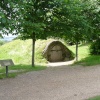 | 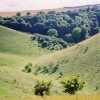 | 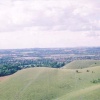 |
| Sally Birch Posts: 292 Joined: 13th Feb 2009 Location: UK | quotePosted at 17:20 on 26th March 2009 I've spent a lot of time browsing the images on POE in the hope of geaning tips to help me improve my own images, and as you may have noticed I have asked for comments on my images which might help me to improve my work. Expert opinion not necessary anything welcome! The two most common problems I experience and also notice many other contributers experience are crooked horizons and burnt out uninteresting skys. As far as leveling horizons is concerned I have discovered that this is easy to do in almost any imaging software from free downloads to the latest Photoshop. I now have version CS3 but still have a lot to learn. With regard to the "sky" problem any suggestions would be welcome. For anyone looking for an easy to use free piece of image editing software I found PICASA very easy use before I got my new stuff. Just type PICASA into your search engine to find the website and download the latest free version. Happy snapping. |
| Jason T Posts: 7421 Joined: 14th Apr 2004 Location: UK | quotePosted at 21:03 on 26th March 2009 If you have CS3 you can do pretty much anything to improve the sky! If its a cloudy sky, try using the burn tool, its a little hand kind of logo on the left, if CS3 is the same as elements! you can try masking the sky using lasso tool, feathering it and darkening it a little! just play about in photoshop, its easy to go too mad, but it doesn't hurt, a few of the photography mags, offer tutorials too, and even if its not what your looking for it gets you into using bits you never knew were there! |
| Jason T Posts: 7421 Joined: 14th Apr 2004 Location: UK | quotePosted at 21:05 on 26th March 2009 Hey if your skies are looking pale and bleached, sounds like you need a neutral density graduated filter, if you use an SLR that is? it darkens the sky a little so allows the ground to be lighter, and still get the stunning sky! |
| Sally Birch Posts: 292 Joined: 13th Feb 2009 Location: UK | quotePosted at 21:27 on 26th March 2009 Hi Jason, Thanks, hope we can get the ball rolling and have lote of posts to help members of all levels of experience so if you have any ideas to help us improve our images lets hear them. By the way I am having a lot of fun now that I take RAW images and can tweak them in Photoshop if necessary |
| Jason T Posts: 7421 Joined: 14th Apr 2004 Location: UK | quotePosted at 21:31 on 26th March 2009 Oh i've just started taking RAW shots!! it makes such a difference doesn't it!!!! |
| Paul Hilton Posts: 2605 Joined: 21st Nov 2004 Location: UK | quotePosted at 22:07 on 26th March 2009 Hi Sally---you mentioned 2 problems above. The tilted horizon is easly corrected in 2 ways, but when opening an image in CS3, use Ctrl + J to duplicate the image---plus I always check the Levels with Image > Adjustments>Levels. But for your horizon, Edit>Transform>Rotate then using the handles on the sides, rotate the image until its straight---or also maybe add View>Show> Grid which will give you a horizonatal reference to work to. Alternately, right click the Eye Dropper tool and select the Measure tool from the flyout options. Drag it along a horizontal part of your image, which of course, is slightly out. Then---Image>Rotate Canvas>Arbitrary> click OK on dialogue box that has come up. The image will now correct the horizon. In both cases, the image will need to be cropped, as its ended up at a slight angle. Edited by: Paul Hilton at:27th March 2009 01:47 |
| Paul Hilton Posts: 2605 Joined: 21st Nov 2004 Location: UK | quotePosted at 22:23 on 26th March 2009 Your second problem--the sky has washed out i.e. over exposed due to a number of reasons. perhaps the dynamic range is too wide for the camera, and Jason's suggestion of using a Grey Grad---and metering in Manual prior to fitting it--is lessening the dynamic range into something the camera can handle. If shot in Raw, you can start to bring back the washed out sky. with the image opened in Raw, tap the letter O on keyboard. The washed out areas will now show up as red and using the Recovery slider ( perhaps with Exposure and Brightness too) can start to bring out the over-exposed sky to something as i actually was. Tapping U will show under-exposed areas as blue. In Raw, you can convert the image twice, first converting it with the landscape as you want it, ignoring the sky. Save as a Jpeg, then go back and adjust the Raw image for the sky, ignoring the land which will become under exposed, and save as a Jpeg. Opening both jpegs on CS3, you want to combine the correctly exposed land with the correctly exposed sky images. Using the Move tool, drag the correctly exposed sky image into the other image. Now, with the Eraser tool, start to erase the under-exposed landscape to reveal the correctly exposed one underneath, and when you're done, you should now be looking at the best parts of both images together. Click the Create a New Layer icon on the Layers box on the right; flatten the image and the File> Save as... give it a new name, and your done. Your properly exposed landscape is now combined with your properly exposed sky by doing this double conversion.
Edited by: Paul Hilton at:26th March 2009 22:29 |
| Paul Hilton Posts: 2605 Joined: 21st Nov 2004 Location: UK | quotePosted at 01:40 on 27th March 2009 Sally---If you want to learn a bit more about CS3, I can recommend London photographer Martin Evening's book , 700 pages worth, Adobe Photoshop CS3 For Photographers, which includes a tutorial CD as well. Monthly magazines in the shops are useful for their video tutorials some include which I find makes it easier when you can see what's going on in the lessons. |
| Sally Birch Posts: 292 Joined: 13th Feb 2009 Location: UK | quotePosted at 09:03 on 27th March 2009 Thanks Paul, on the ball as usual. Since I have discovered Raw images and Lightroom and Photoshop I am awed by the possibilities they open up although nothing else gives the thrill of getting it right first time. Please, if you have any other suggestions to help us beginners why not post some suggestions. Love the Avatar by the way. Beautiful smiling eyes; I'll bet the little girls loved you, but do tell were there any teeth behind those firmly compressed lips? |
| Paul Hilton Posts: 2605 Joined: 21st Nov 2004 Location: UK | quotePosted at 01:22 on 28th March 2009 OK Sally---at your request as couple of things you're bound to come across--- 1) your cropping an image but just want to trim a slight amount off. but, when the crop tool gets very close to the edge of the image, it jumps---almost like being magnetic, to the very edge, and stops you from trimming a bit off. To stop it jumping and keep it very close to he edge, hold dow the Ctrl key while doing so, and it'll stay where you put it rather than it's jmping to the edge. 2) You have an old faded photo you want to restore to something more like the original from years ago. After scanning it and bring it into PS, duplicate the image ---Ctrl + J---then on the Layers palette, there's a drop down that says Normal---for the Blend Mode its refering to. From the dropdown menu on it, select Multiply, and the image---with any luck---will start to regaining the lost contrast etc. and start to look more as it was originally. I think I did have my teeth in those days of yore, thanks ! |